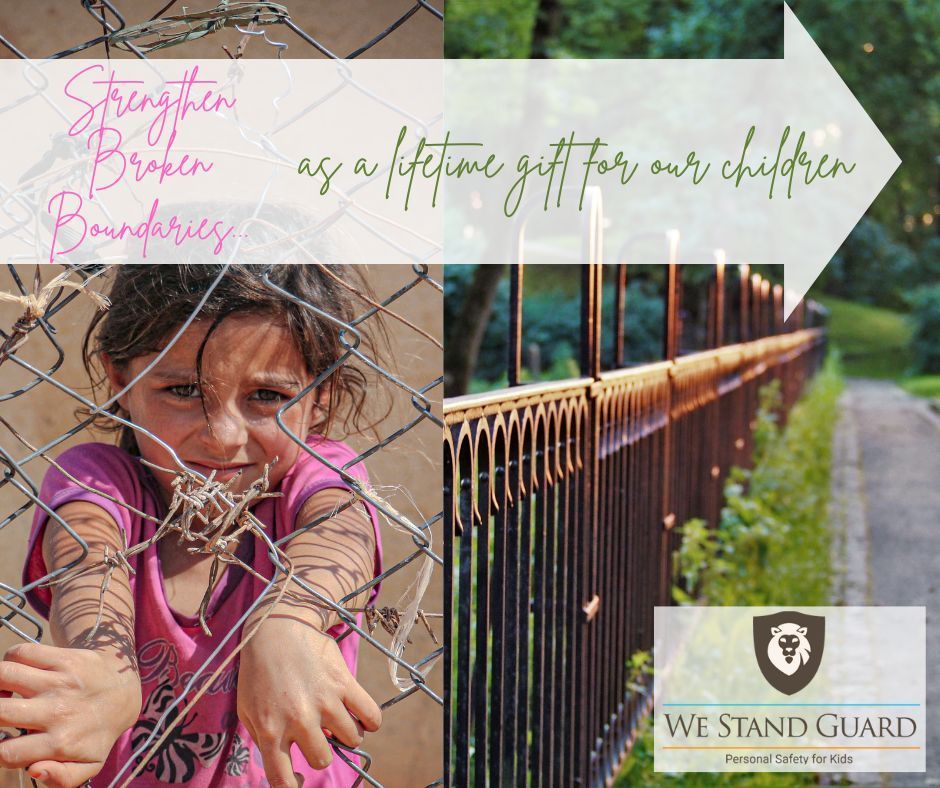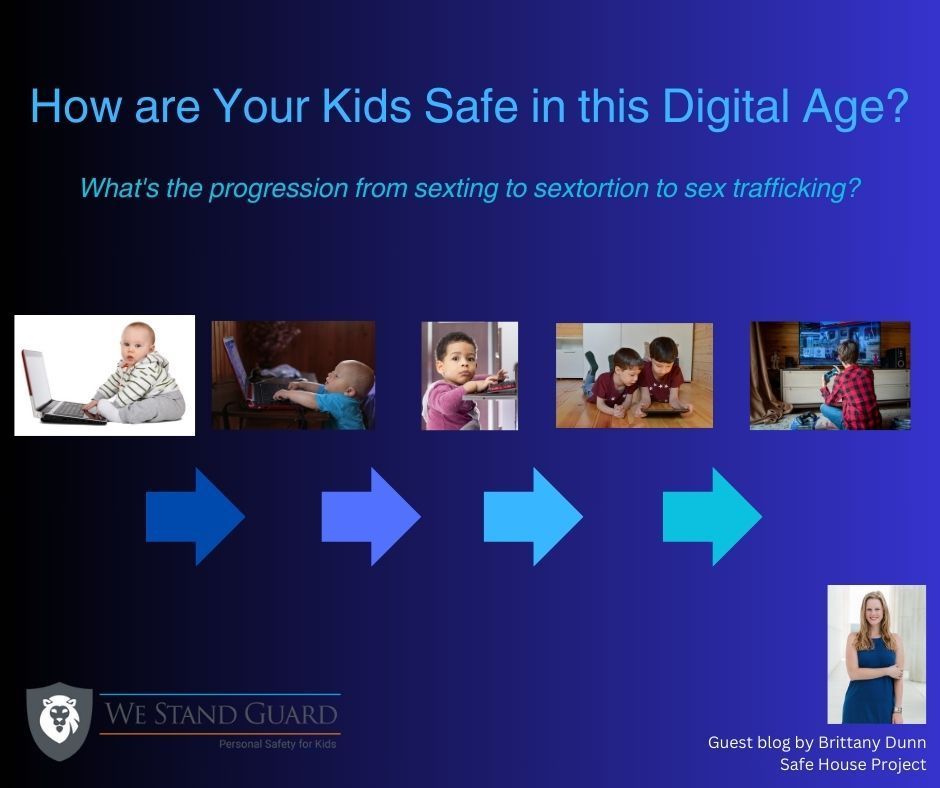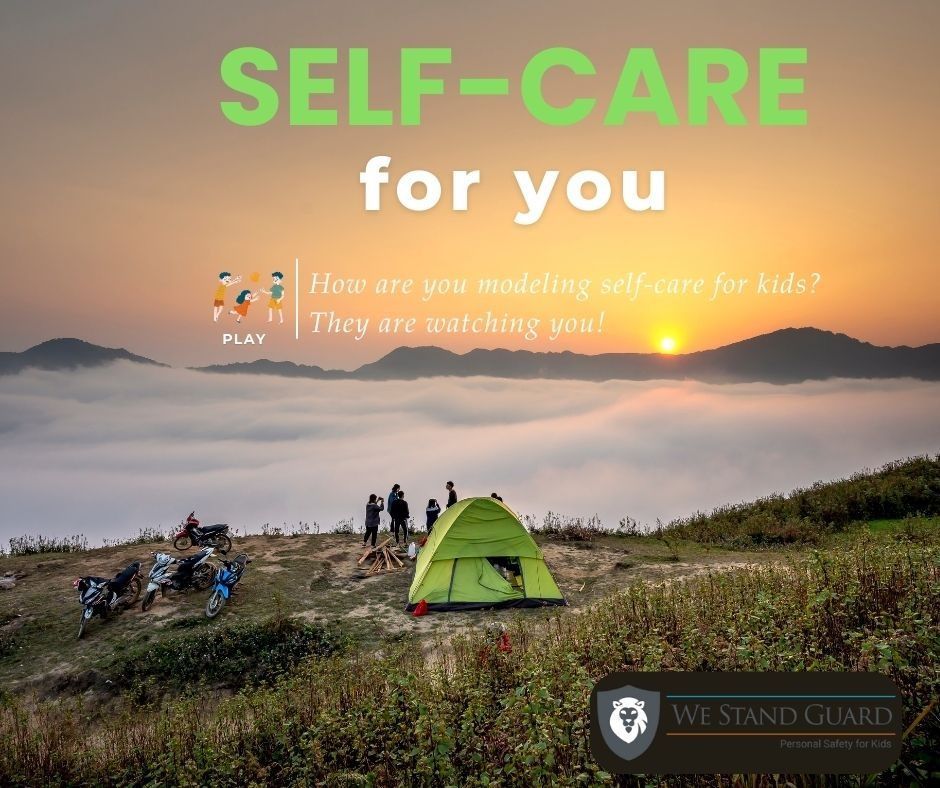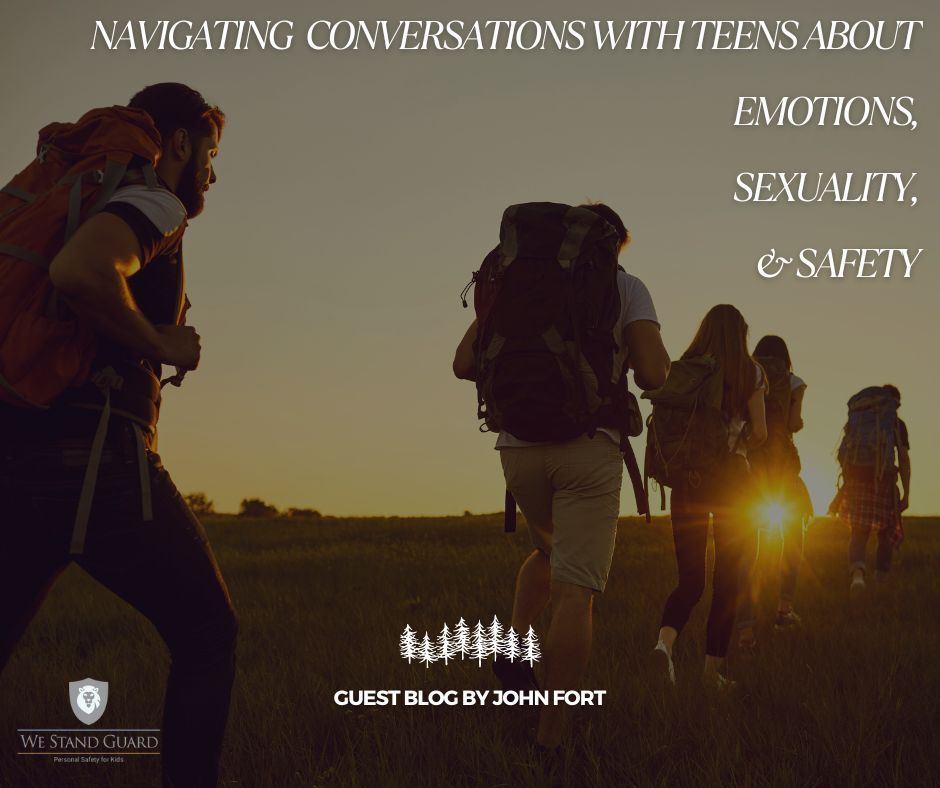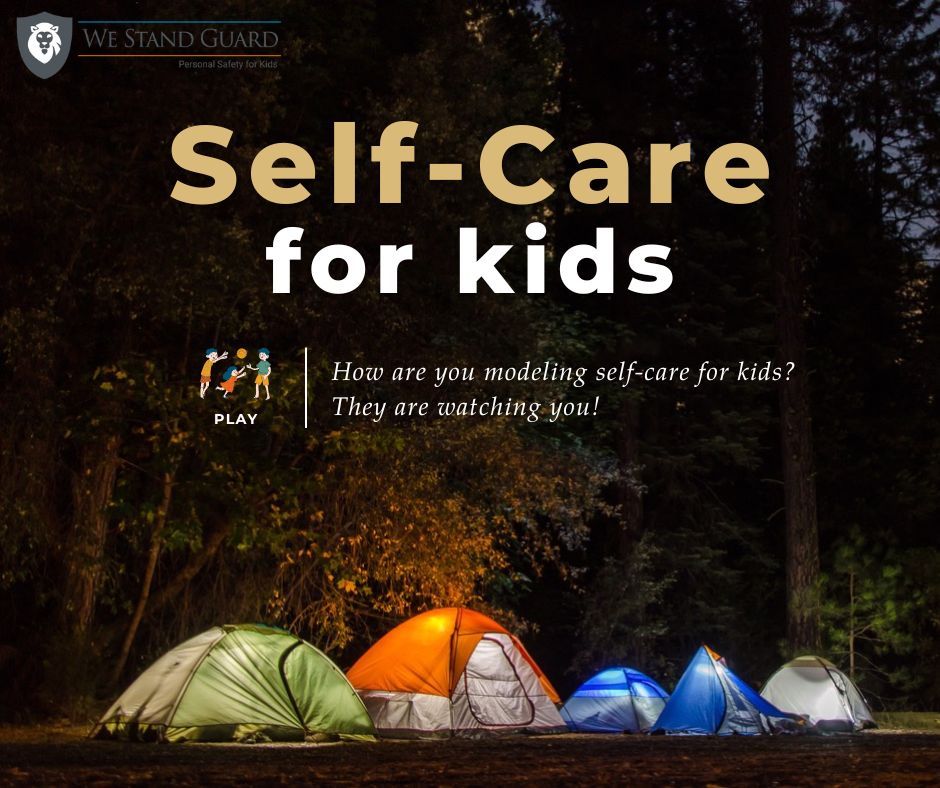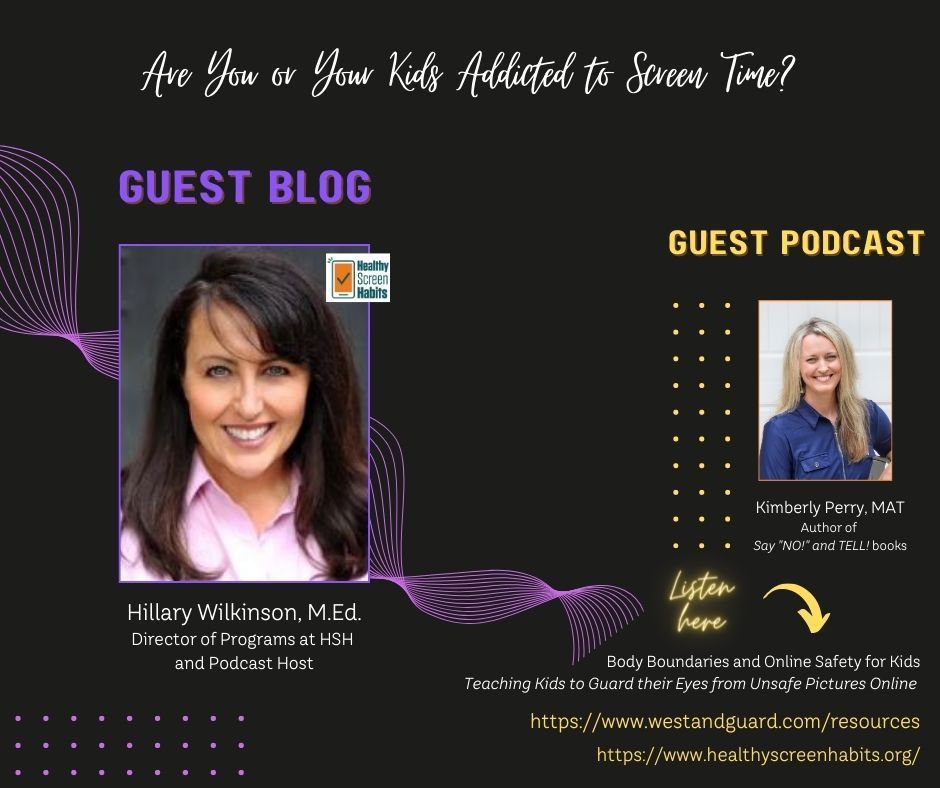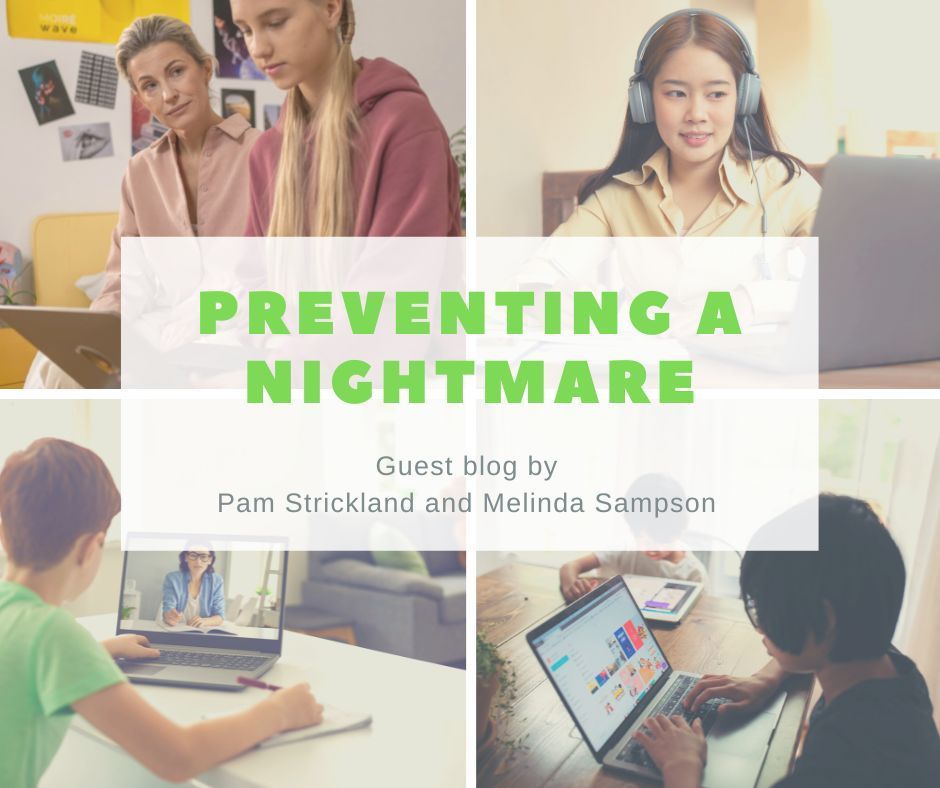No one told me that was p*rnography… AND abuse. Read a real-life story…
Talk today for a safer tomorrow to help prevent child sexual abuse and the harms of pornography – BUT HOW?

This article is part of Talk Today, Safer Tomorrow, a national campaign from The Safeguard Alliance and the National Center on Sexual Exploitation to help parents protect children from the harms of pornography. Get your FREE download guide – Talk Today, Safer Tomorrow! 10 Easy Conversation Starters . #TalkToYourKids #TalkTodaySaferTomorrow
A Survivor’s Story - A Real-Life Account about Neighborhood Kids' Hidden Vulnerabilities
Ever since I have written the Say “NO!” and TELL! books, so many people have told me their stories of surviving child sexual abuse, which has included the harms of pornography as a root problem as well. One friend wants to share her real-life story with us (anonymous and names changed) about the impact of both – child sexual abuse and pornography – to help protect the next child.
___________________________________________________________________
When I was 6 years old (first grade) and my brother was 8 years old, the abuse began and happened for possibly a span of two years during after-school care. A neighbor woman kept kids (around 7 of us under the age of 10 years old) after school. Her teenage son, Sean, had graduated from high school; he was the abuser. These were people the neighborhood trusted, and this family ate many meals with my family, including Sean. Sean took an interest in the children and helped us with homework. He taught me how to tie my shoes. He would play outside with us. Mrs. D, the childcare woman, would greet everyone at the door, but she was never around or maybe she would be in the kitchen, but completely inattentive. Mr. D was retired military and watched TV downstairs. No supervising adult was watching the kids. Later, Mrs. D would see us out the door saying all kinds of compliments as if she had been caring for us.
Due to chronic asthma, I couldn’t run and play outside like most kids. I was often put in Sean’s room to take a nap or rest. That is when Sean would come in and show me the pornographic pictures in the magazine and sexually abuse me by saying “now we are going to do this.” I was isolated and did not know the other kids were being abused until years later. To get away from him, I would make myself have asthma attacks so I would have to go to the hospital or stay home from school. I missed 32 days of school in first grade.
To ensure our silence, Sean killed the neighbor’s dog – a German Shepherd – and told the boys if you tell anyone, I will do this to your sister and told the girls I will do this to your mommy. I remember not telling my parents because I wanted to protect my mother. One day I found a pornographic magazine and showed it to Sean’s dad and told him, “Sean does this to me.” In response, he stared at me in disbelief and it seemed like he could not breathe. The next day, I refused to go back to Sean’s house. My brother stayed with me as we waited for my parents to come home from work. We were disciplined harshly because my mom said we scared Mrs. D by staying away. My brother even attempted to tell my dad that Sean was abusing him, although he did not have the literal vocabulary to explain abuse. My dad told him to toughen up and just walk away from Sean. We soon realized that after telling Sean’s dad and our dad about the abuse, nothing about our situation was going to change.
The abuse affected me in many ways. First, something died inside me after I was abused. It was like something snapped in my head. I thought, “if I love my mom, Sean might kill her.” I stopped loving anyone because I thought, “he will kill them.” I could not be held or hugged. I would not give a hug. I dealt with the pain and shame through isolation, eating disorders, depression and withdrawal. I had many thoughts of suicide and running away.
Second, I dressed like a boy and tried my best to behave like a boy. I cut my long brown hair and wore my brother’s hand-me-downs clothes. I did not think Sean would do this to boys, so I tried to become a boy thinking it might stop.
Third, a battle for control ensued between my mom and me. No matter how hard she tried, I would not wear “girl clothes” any longer than I had to. I even intentionally ruined dresses and anything frilly. Later, we began a battle over food. She expected me to eat what was on my plate. In my search for any sense of control in my life, I began to throw up after meals or refuse to eat at all.
Fourth, the abuse took away my voice. The threats of killing our families by actually killing a dog in front of us as an example silenced me. And, the disbelief of Sean’s dad and my dad further robbed me of my voice. Also, I could not explain what was being done to me because as a 6-year-old, I literally did not have the words.
Fifth, no one believed me, so betrayal and depression plagued me. As an adult, I did try to tell my childhood pastor, and he said it was my fault for letting it continue to happen. I left that meeting wanting to kill myself, believing it must have been my fault. I journeyed further into the darkness of shame.
Lastly, my brother and I realized we were both abused by Sean. After I gave birth to my first child at age 28 years old, and he was holding my baby, he said “if anything happens to her, I will kill him!” At that moment, we both realized the other one had been abused. About a year later, we started talking about this. Unfortunately, at the age of 49 years old, my brother committed suicide. I believe the pain and shame from abuse was just too much for him to bear any longer.
The main insight I want you to know is how effortlessly Sean blended into our lives because of his deception. My parents had complete trust in Sean and his parents as our caregivers. Our family rule was to listen to and respect all adults – do what you are told! Sean would use this against us and even repeated this rule back to me when I tried to resist. Strategically, he never mentioned body parts or verbalized what we were doing. Plus, my parents never dropped in unannounced to check on us. They would call when they got home, and my brother and I would walk home. We never talked about what happened during after-school care.
Where am I today? I am alive and thriving.With help and encouragement from a friend, I began counseling through group therapy in a faith-based ministry. This helped me walk a path of healing and forgiveness. I choose to walk alongside women as they heal from the effects of abuse. My voice has returned with laughter and joy.
If I had read a Say "NO!" and TELL! book when I was a young girl, this could have made a difference in my life because I would have had a chance to develop my voice as a young child. I would have had the language to say the words of what was happening, including the body parts. My family would have had a communication plan, so my brother and I could have felt safe to tell them the truth of what was happening. Additionally, my brother and I plus the 5 other kids may have been spared years of abuse from Sean. My brother had later told me that Sean would take the boys back in the woods and show them pornography. Also, Sean may have been arrested so that no other kids were hurt for the rest of his life. The only reason the abuse ended was because Sean and his family moved away quickly and unexpectedly; a reason for the move was never given to us.
If this has happened to you or someone you know, I want to encourage to tell someone until someone believes you, so you can live life without fear and shame from the painful secret of abuse. And remember, it was NOT your fault!
___________________________________________________________________
Three Ways to Train our Children with Prevention Inside and Outside the Home
Sean had a real problem with pornography and sexually abused children with it. Whether many lives are harmed, or one single life is devastated by the harms of pornography, the damage can be life-altering, significant and pervasive for both the abusers (e.g. addiction) and victims. Child sexual abuse includes both physical contact and non-physical contact (e.g. showing a child pornography); therefore it is vitally important to train our children while they are young about the harms of pornography plus the threats of child sexual abuse by teaching boundaries and personal safety.
The first way to empower your child is to create a Personal Safety Family Plan as a preventative measure (download this FREE resource). This tool will help your family determine a code word for danger, list safe people to contact, remind everyone of the basic safety premise for children: remember to say NO! and get away if you can, tell and keep telling until it stops; take a stand! TM It is important to have a plan so children know what to do during a questionable encounter whether they are at home with someone they know or away at summer camp making new friends. Sometimes as grown-ups, we may feel intimidated about how to even begin the conversation. The good news is there are child-friendly ways to discuss boundaries and personal safety with young children (e.g. without getting into reproduction prematurely) in order to protect them early on. Building that bridge of communication can strengthen the parent-child relationship as well as hold organizations accountable for appropriately interacting with children while in their care. Disturbingly enough, with the easy accessibility to pornography for children and teens, instances of a child abusing a child or a teen abusing a child is on the rise. Not only do we want to empower and train our children so they avoid becoming victims of child sexual abuse, but our society must consider the threats and ramifications of pornography creating young abusers, since young children will not understand what’s even happening in those pornographic images.
Second, I created a new educational resource call Say “NO!” and TELL! Training Grown-ups in Boundaries and Personal Safety for Kids for this very reason; to empower children to be safer outside their homes. As parents, we can train our children inside the home by reading the Say “NO!” and TELL! children’s books (Maisie Monarch for girls or Daxton Dolphin for boys) with a child and teach them what to do during a questionable encounter, but what about once they leave the home for an activity? Will the coaches, teachers, music teachers, camp counselors, babysitters, and teens understand boundaries and personal safety for kids? For example, one helpful tool inside this training workbook is the “Protocol for Interacting with Children” posters that can be displayed for everyone to see throughout a youth or sport organization. Setting the proper expectations is vital for young teens and grown-ups to know what to do and what not do while interacting with children, such as how to handle bathroom procedures. Also, what common language is permissible with the children regarding boundaries and personal safety? And, what are the reporting procedures for suspicious actions?
Third, reading a Say “NO” and TELL! children’s book with a child for in the home training can empower the entire family for a lifetime as well as the next generations to come. After teaching boundaries and personal safety to over 1000 children in the schools, I was inspired to write these children’s books, which are toolkits with various sections including a story, scenarios and solution strategies so every family can customize their own boundaries and personal safety training at home. I researched the tactics an abuser may try with a child and created the Scenarios section including eight positive life skills (i.e. what is privacy?) for a grown-up and child to role play together with a safe or unsafe situation. Rehearsing and role-playing life skills such as saying “NO!” are key because this positive practice can prepare a child with options to handle a negative and questionable encounter.
Children, Families and Youth Organizations that Talk about Prevention of Child Sexual Abuse (including Harms of Pornography), can be Safer!
So many brave men and women have told me their own personal stories of surviving child sexual abuse, including the harms of pornography, that I created a series of We Stand Guard blogs highlighting “real life anonymous stories” that debunk myths. I believe it is important for the survivors’ voices to be heard so we can all learn from each other, heal together and do something positive through the pain by helping to prevent abuse in the next generation. If you are interested in finding out a way to share your anonymous story with me so we can create a blog post for others to learn from your experience, please email me at Kimberly@WeStandGuard.com.
Plus, get your FREE download of Talk Today, Safer Tomorrow – Ten easy conversations starters for talking with kids about the dangers of pornography and join our national campaign today!
